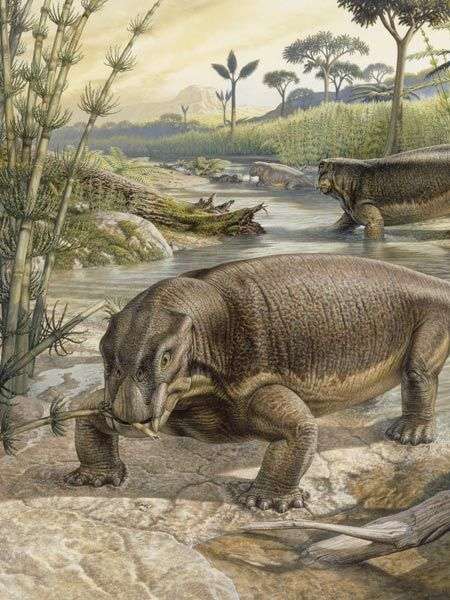The most precise study yet of the the earth's most catastrophic extinction event, the end Permian, found that warming caused by natural releases of CO2 was greatly amplified by the collapse of tropical and temperate forest ecosystems which then caught fire releasing huge stores of carbon sequestered by trees. So much light 12Carbon came from burning and dying trees that the CO2 in air was significantly lighter for 20,000 years.
The extinction interval was less than 200,000 years, and synchronous in marine and terrestrial realms; associated charcoal-rich and soot-bearing layers indicate widespread wildfires on land. A massive release of thermogenic carbon dioxide and/or methane may have caused the catastrophic extinction.
This stunning report, by a team of MIT and Chinese scientists was published on-line today in Science magazine. So much carbon was released by this chain of events that the oceans became acidic, leading to the greatest mass extinction of marine species ever. According to the detailed chronology of this study fires ignited by volcanic eruptions contacting large deposits of coal and oil shale caused a chain of catastrophes. The drying and burning of the earth's forests caused by the climate change brought on by the increased levels of greenhouse gases, led to catastrophic soil loss. The oxygen levels of the ocean and atmosphere dropped. Sulfurous gas levels rose. The combination of so many rapid disastrous changes caused the greatest extinction event in earth's history.
Middle Permian tropical scene, artist's interpretation

Over the past decade the Amazon has gone through two 100 year droughts, causing massive tree mortality and subsequent spikes in atmospheric CO2 levels. Until the last decade, humid conditions tended to suppress Amazon fires. Recent reports show that increases in tropical Atlantic sea surface temperatures tend to trigger Amazon droughts. A report published in June, 2011 showed that fire severity could be predicted based on correlations with tropical Atlantic sea surface temperatures
Using meteorological stations precipitation and the Moderate Resolution Spectroradiometer (MODIS) Active-Fires (AF) during 2000–2009, we show that fire anomalies vary closely with July-August-September (JAS) precipitation variability as measured by the Standardized Precipitation Index (SPI). The precipitation variability is, in turn, greatly determined by sea surface temperature (SST) anomalies in the North Tropical Atlantic (NTA). We develop a linear regression model to relate local fire activity to an index of the NTA-SST.
The Amazon is becoming susceptible today to warming, drying, death and fires like the tropical forests were 250 million years ago at the end of the Permian. The death spiral that happened at the end of the Permian is shocking to read about. This is a history we must study and learn so we don't repeat it.